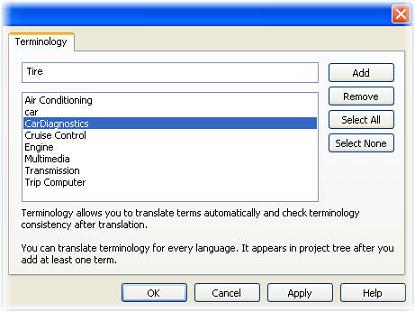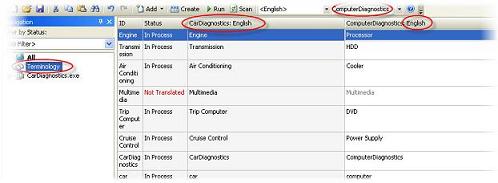Multilingual Rebranding
Rebranding is a product adaptation for a new market. It is very effective instrument to create precisely positioned products, and market them separately to several target markets. Dexxa computer mice are rebranded Logitech devices sold at a lower price by Logitech in the low-end market segment without undercutting their mid-range products. Rebranding in this manner allows one set of engineering and QA to be used to create multiple products with minimal modifications and additional expense.
Now days rebranding is widely used in any business. Just look at auto industry and you will see a lot of samples. Several companies share most components and produce cars for extremely different target markets. Luxury car, sporty sedan and family car with the best safety share the same set of components and differ only by design and settings.
If you consider rebranding in software market it doesn’t require huge investments like in auto industry and therefore can be very efficient instrument. Following a merger or acquisition, companies usually rebrand newly acquired products to keep them consistent with an existing product line. For example, when Symantec acquired Quarterdeck in November 1998, Symantec chose to rename CleanSweep to Norton CleanSweep. Later on, the company chose to reposition its entire product line by grouping products into a bundle known as Norton SystemWorks. Symantec is not the only software company to reposition and rebrand its products. Much of Microsoft's product line consists of rebranded products, including MS-DOS, FoxPro and Visio.
If you look at software rebranding from the point of localization it looks like translating software from the one brand to the others. After understanding that fact we decided to combine localization and rebranding into multilingual rebranding and create efficient tool to solve both tasks simultaneously.
In a project properties dialog you’ll find Brands page that allows you to add brands into your localization project. After that brand selection list will appear at main toolbar near target language combobox. Then you can configure brand specific terminology and start translation.
If you want to add brands into localized application you’ll need to make the following steps:
- Add new brands (Project\Properties\Brands)

- Create brand specific terminology like product name, contact information, file extension and etc. (Project\Terminology\Add|Remove Terms)

- Translate terms for other brands. Translate original language first. (Terminology item at Navigation tree)

- Translate brands using terminology (Project\Terminology\Translate)
- Translate additional strings that should be changed in brands.
In five steps you rebranded your multilingual application into several languages. Furthermore, Lingobit Localizer will merge changes after you change original product and create brands translations automatically.
| 

